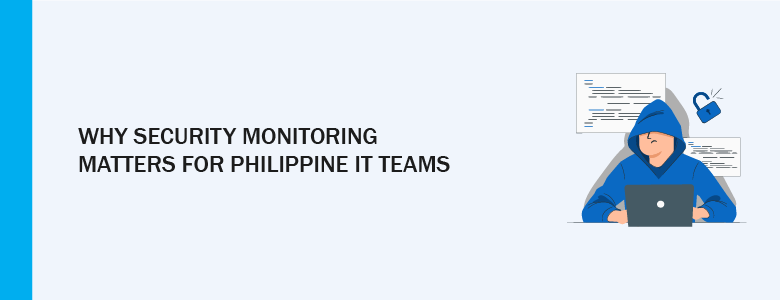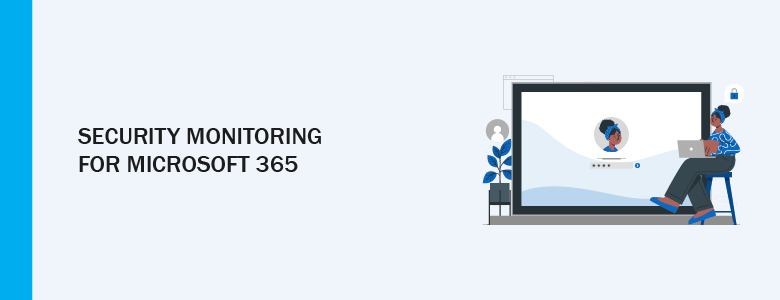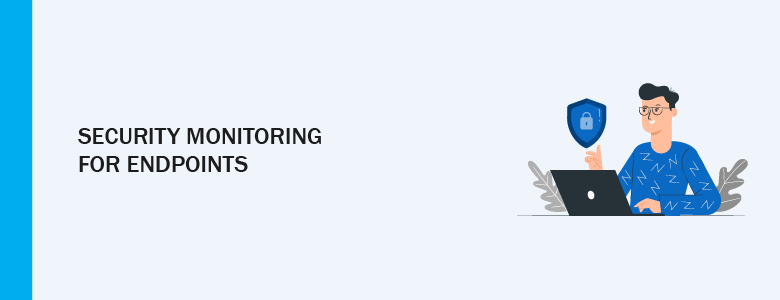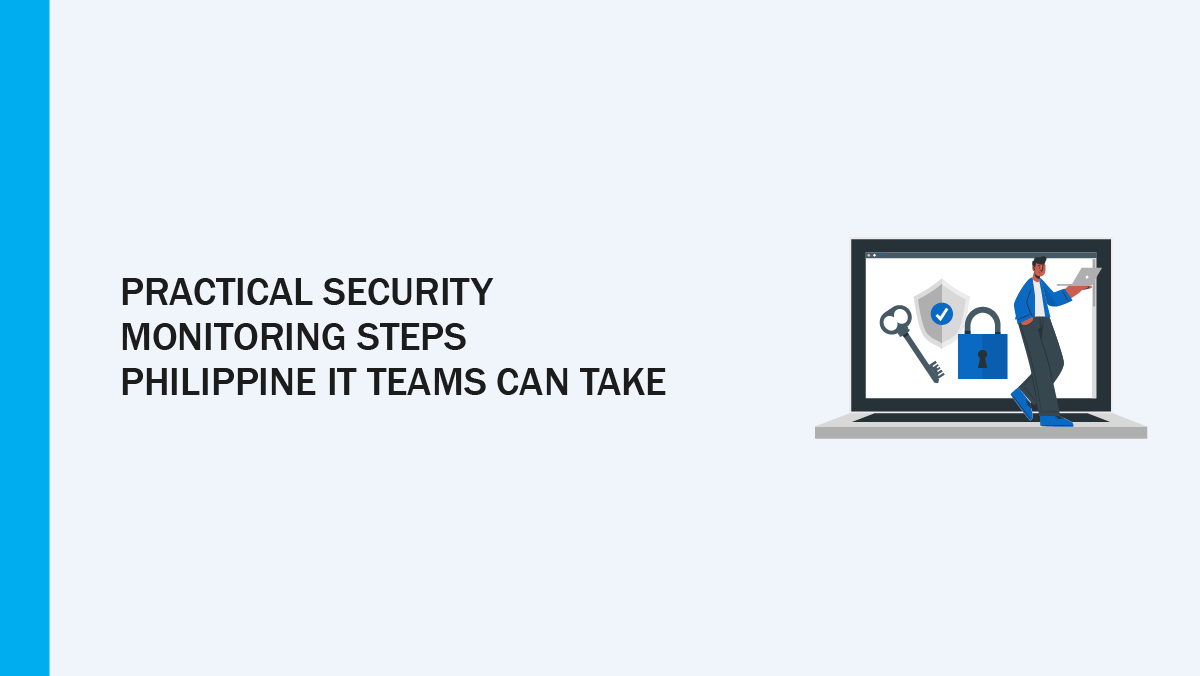Security monitoring is simply this: collecting signals from your systems, spotting the odd ones, and turning those signals into clear next steps. It sounds technical, but the goal is easy to state. Find problems early, reduce noise, and make sure someone knows what to do when something odd shows up.
Why security monitoring matters for Philippine IT teams

Attackers do not respect business hours, and we see both global campaigns and targeted regional activity affecting local organizations. That means a simple, steady security monitoring habit pays off: it helps you spot suspicious sign-ins, catch unusual mailbox changes, and notice devices that are acting strangely before they cause a bigger problem.
You do not need a massive program to get value. Start with a few high-value signals and make them actionable. The fastest gains come when steady security monitoring is paired with ongoing tuning and a long term partnership. If maintaining those signals becomes burdensome, bring in an experienced partner who will work with you over time to tune detections, reduce noise, and help build internal capability. Common starting points for attackers include identity, email, and devices, so monitoring Microsoft 365 and endpoints usually delivers the biggest practical return.
Security Monitoring for Microsoft 365

Microsoft 365 is where identity and collaboration live, so its logs tell a story about who did what, when, and from where. Sign-in records reveal unusual access patterns, mailbox audits show forwarding rules or unexpected delegation, and configuration changes highlight shifts in admin privileges. These signals are especially useful for spotting identity-based attacks and account takeovers, because they tie a user to a sequence of actions across mail, files, and apps.
On their own, M365 signals give you the user context. That context explains whether a suspicious file access was a user mistake, a misconfigured sharing setting, or the start of a broader compromise.
Security Monitoring for endpoints

Endpoints tell the device-side story. They show processes that ran, unexpected network connections, and behaviors that indicate someone tried to persist or move laterally. Endpoint telemetry often provides the first signs of active intrusion, such as a suspicious process creating a backdoor or attempts to dump credentials.
Where endpoint data shines is in confirming activity on a machine. An odd sign-in in M365 combined with a suspicious process on an endpoint is much stronger evidence of compromise than either signal alone. Reading both sources together reduces guesswork and speeds confident decisions about containment.
5 practical steps for effective security monitoring

These five steps focus on practical learning and repeatable actions. Each step explains why it matters, common pitfalls, and how a short pilot or initial engagement can help you get started. The idea is to use pilots as a safe first step that often leads to a longer-term partnership focused on continuous improvement.
1) Prioritize the right logs
Why it matters: collecting every log is expensive and creates noise. Focus on the sources most likely to show compromise, such as sign-ins and mailbox audits for M365, and process and autorun telemetry for endpoints. Prioritizing these logs avoids wasted storage and keeps investigations focused on signals that matter.
Common pitfalls: teams sometimes collect too much data without a plan to review it, which creates blind spots rather than clarity.
2) Tune alerts so analysts trust them
Why it matters: if analysts see hundreds of false positives, they stop trusting alerts. Start with a small set of high-confidence detections tied to real business risks and tune thresholds based on real traffic.
Common pitfalls: copying default rules without adapting them to your environment often causes alert fatigue. Test tuning against recent incidents and adjust regularly.
If alerts keep overwhelming your team, consider an external managed service to help triage and reduce noise, with a plan to transition into an ongoing partnership that shares responsibility for tuning.
Practical tuning checklist:
- Define three to five high-confidence alerts to start with.
- Set thresholds and test tuning against recent incidents where possible.
- Consider a short managed triage window with a partner to reduce noise during tuning.
3) Create short, service-focused playbooks
Why it matters: clear playbooks reduce confusion during incidents and speed containment. Keep them focused on the first steps and the people responsible so action can happen quickly.
Common pitfalls: playbooks that are too long or vague are useless under pressure. Keep them short and exercise them so they become muscle memory.
Practice the playbooks in tabletop runs. These exercises reveal gaps and also make it obvious where you might want a partner to handle parts of the workflow, such as containment steps or forensic collections.
Playbook checklist:
- Keep each playbook to a few clear steps with assigned owners.
- Include escalation points and expected SLAs for each action.
- Run tabletop exercises to validate and refine the playbook.
4) Validate with focused pilots
Why it matters: pilots prove whether detections work in your environment and show the real operational impact. Use a small scope to limit risk while getting meaningful feedback.
Common pitfalls: running a pilot without clear success criteria makes outcomes ambiguous. Define what success looks like in terms of reduced tickets, faster triage, or clearer alerts before you start.
Pilots are also a friendly way to test a provider model. A short, controlled engagement shows what managed support looks like and often leads into a long term partnership where the provider and your team share operational duties.
Pilot checklist:
- Choose pilot groups that mirror production risk, for example admin accounts or a representative device fleet.
- Track support tickets, login times, and alert accuracy during the pilot.
- Use pilot outcomes to decide on scale and to refine provider handoff procedures.
5) Report trends and show clear impact
Why it matters: leaders respond to change they can understand. Reporting trends and telling a short incident story helps non-technical stakeholders see the value of monitoring.
Common pitfalls: focusing on raw alert counts rather than trends can confuse leadership. Choose a few metrics that reflect improvement and pair them with short explanations.
When to bring in a partner, and how they help over time

You know your team best. If alert fatigue has become persistent, if you lack after hours coverage, or if tuning and validating detections keeps slipping down the priority list, it is time to consider external support. These are not signs of failure, they are signals that an ongoing, shared approach will deliver steadier operations and clearer outcomes.
A partner can do more than take tickets. Look for a provider that helps with continuous tuning, runbook maintenance, and shared operational duties. Over time this kind of collaboration reduces noise, shortens investigation time, and builds internal skill through joint exercises and knowledge transfer. Expect an initial pilot phase, followed by regular reviews and a roadmap for incremental improvements.
Providers such as CT Link offer managed SOC, Microsoft 365 monitoring, endpoint monitoring, and migration services that can be structured as long term engagements. The value is in consistent attention, documented processes, and predictable reporting rather than one off fixes. When you evaluate partners, ask about onboarding, sample reporting, and how they hand over playbooks and training to your team.
If you are considering help, request a clear scope and a short pilot that tests a few detections and shows the expected operating rhythm. A good partner will propose a realistic plan to move from pilot to steady state, so you gain both immediate relief and an improving security posture over time.
Interested in Security Monitoring services? Visit our service page or contact us at marketing@ctlink.com.ph to consult with us today!

